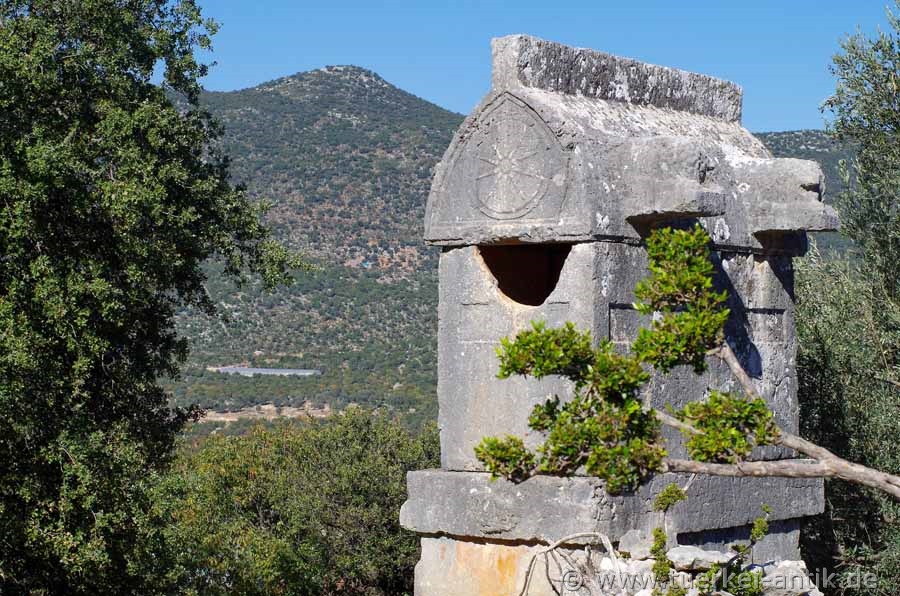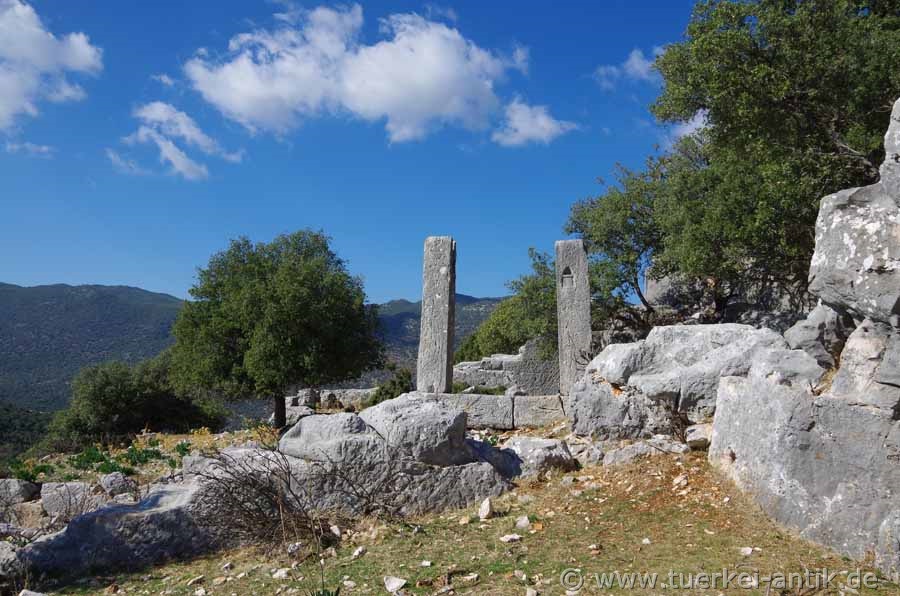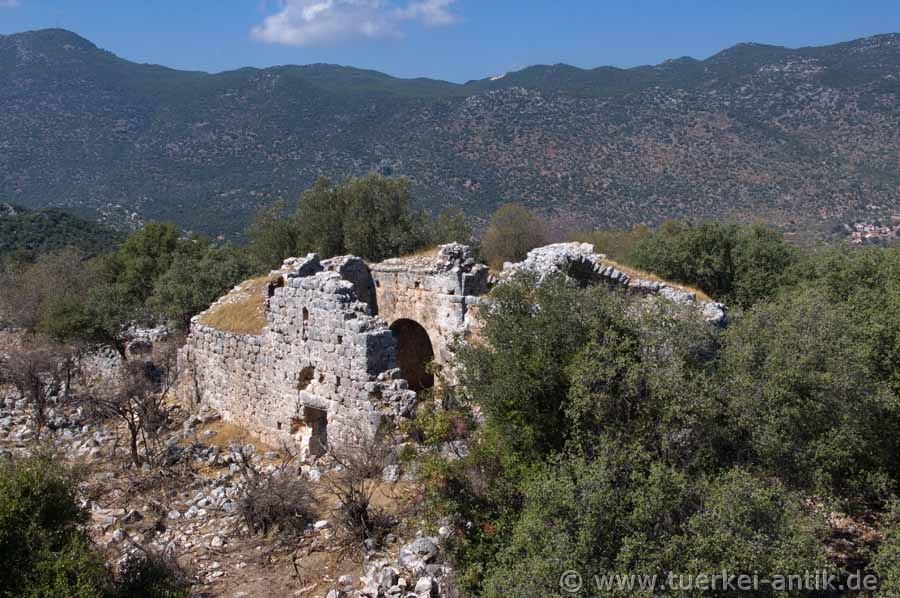 |
| Apollonia | |||
|
|
|
||
| The city wall | |||
|
The original Lycian city of Apollonia (the Lycian name was lost) has always been linked to the nearby port city of Aperlai, but had to subordinate to it in Hellenistic times and give up parts of its territory. It does not appear to have regained importance until the Roman Empire. This is also supported by the fact that large imperial buildings such as the theatre, the three-room thermal baths and a monumemtal heroon were built in Apollonia during this period. |
|||
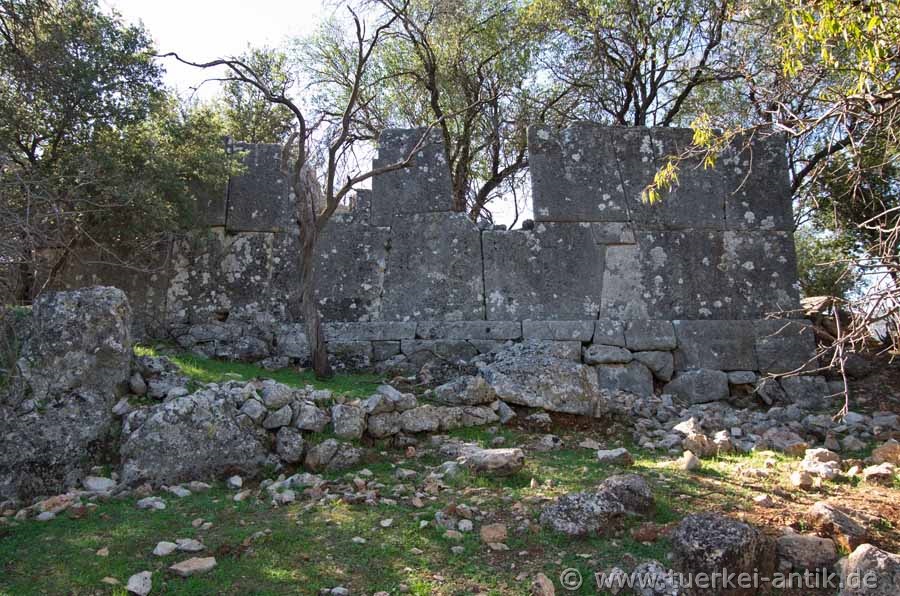 |
|||
| Remains of a Hellenistic building | |||
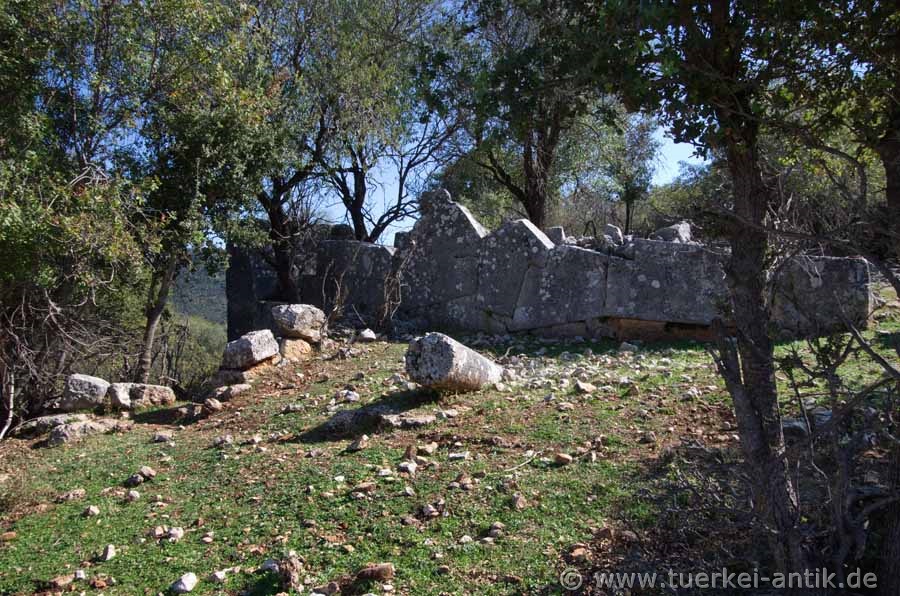 |
|||
|
Remains of a Hellenistic building |
|||
|
|
|||
| Sarcophagus | |||
|
Nevertheless, from the 3rd century B.C., the city of Aperlai took the lead in the newly founded Sympolitie, a union of two or more originally separate towns to form a common polis, when the cities of Apollonia, Simena, Isinda and Aperlai merged in the Lycian Confederation. |
|||
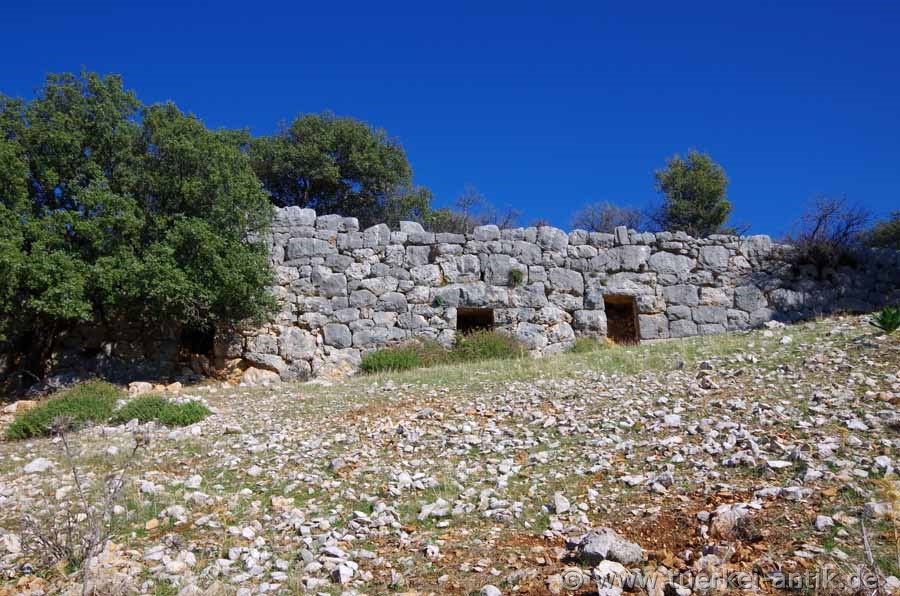 |
|||
| Retaining wall of the Agora | |||
|
|
|||
| Big Gate | |||
|
Already at the time of the first settlement a castle complex was erected on the top of the settlement hill, where even in Byzantine times extensions and improvements were made. To the south, below the castle complex, there are former residential buildings, while the representative buildings from the imperial era were erected north of the castle. |
|||
|
|
|||
|
|
|||
| Byzantine Basilica | |||
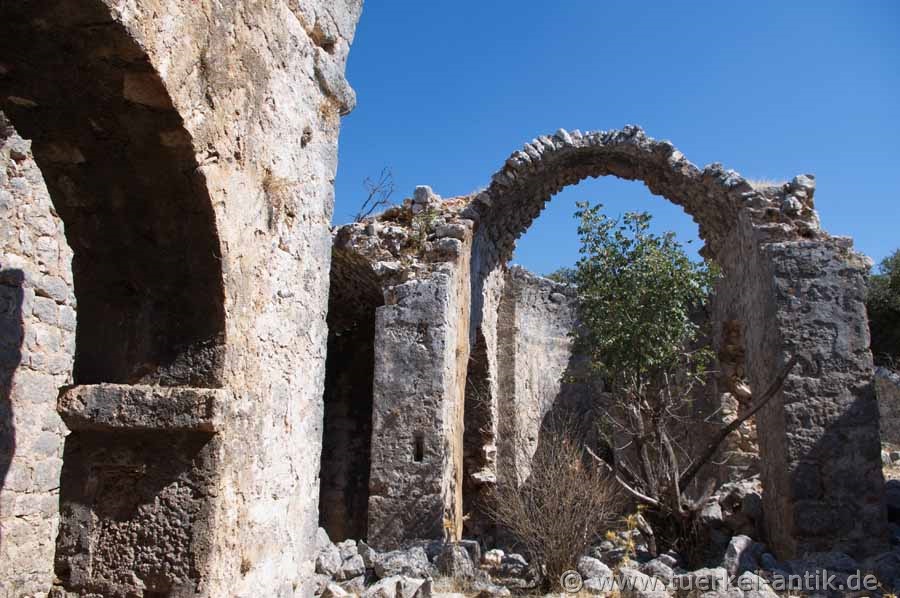 |
|||
| In the Basilica | |||
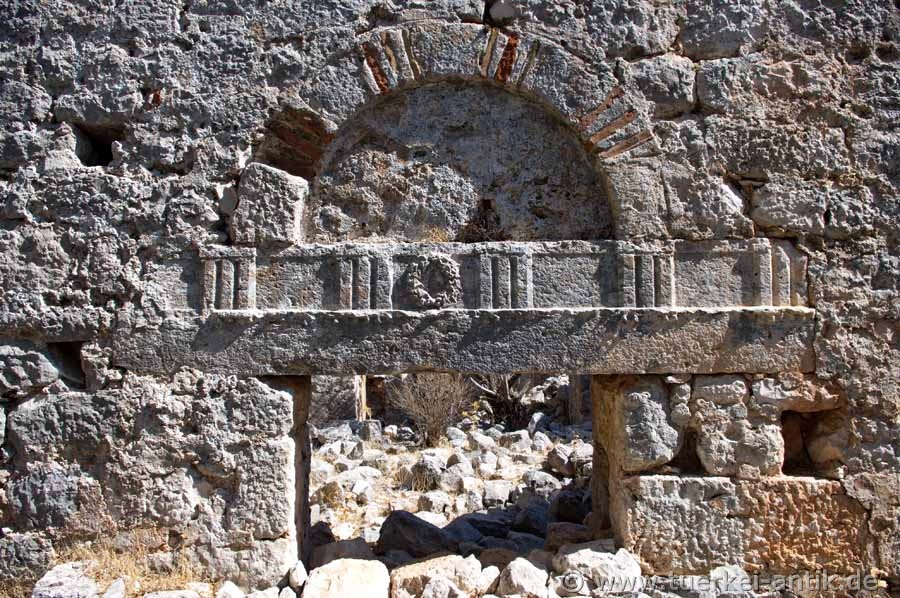 |
|||
| Entrance to the Basilica | |||
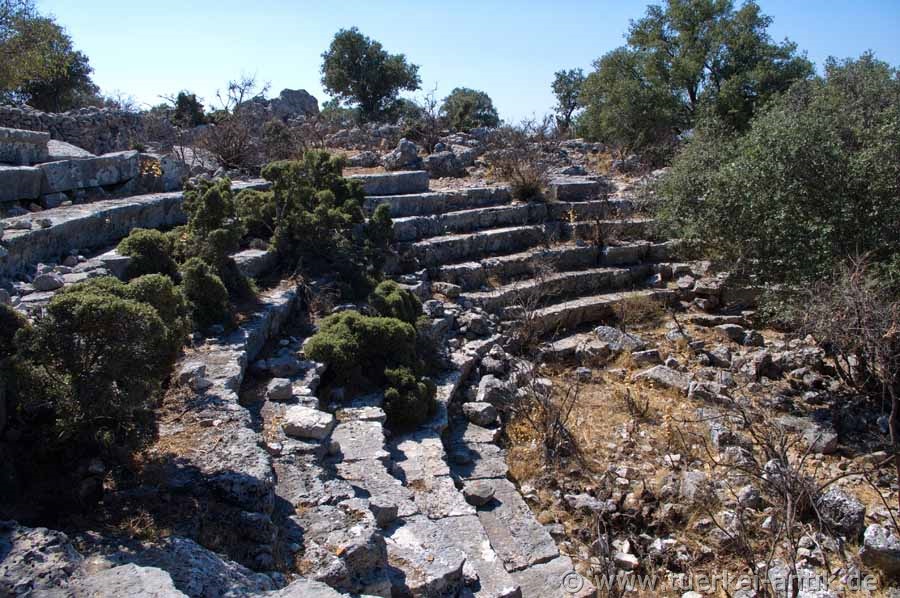 |
|||
| The Theatre | |||
|
|
|||
| The Theatre | |||
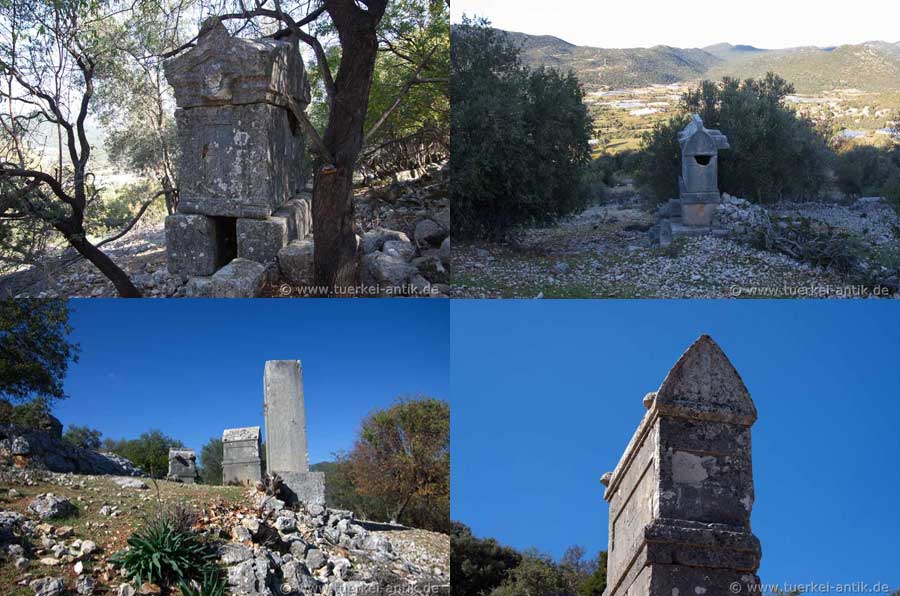 |
|||
| Sarcophagi and pillar tombs in the extensive necropolis | |||
| Photos: @chim, Андрей Мурашкин (https//www.facebook.com/DrugajaTurcija/) | |||
| Translation aid: www.DeepL.com/Translator | |||
| Source: Wikipedia and others | |||
|
|
|||

